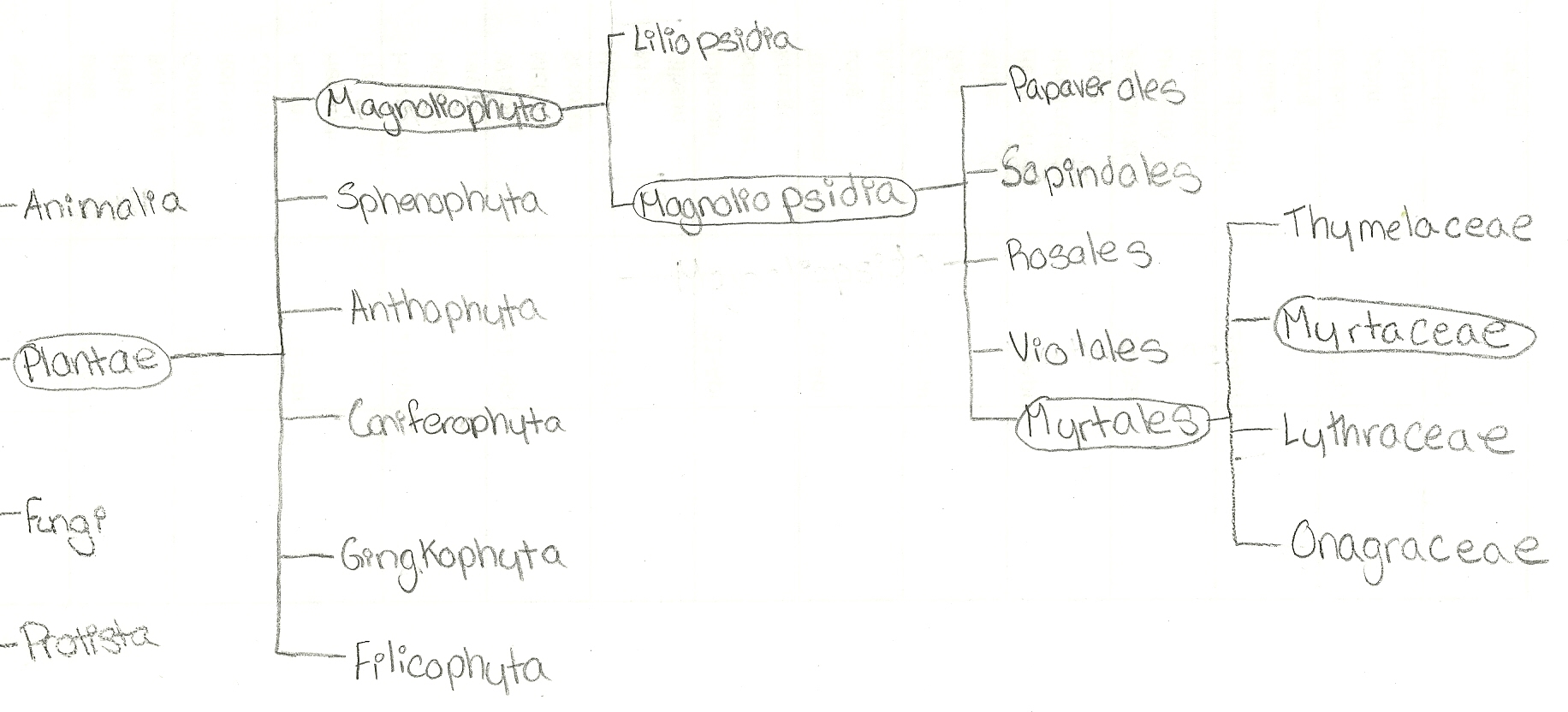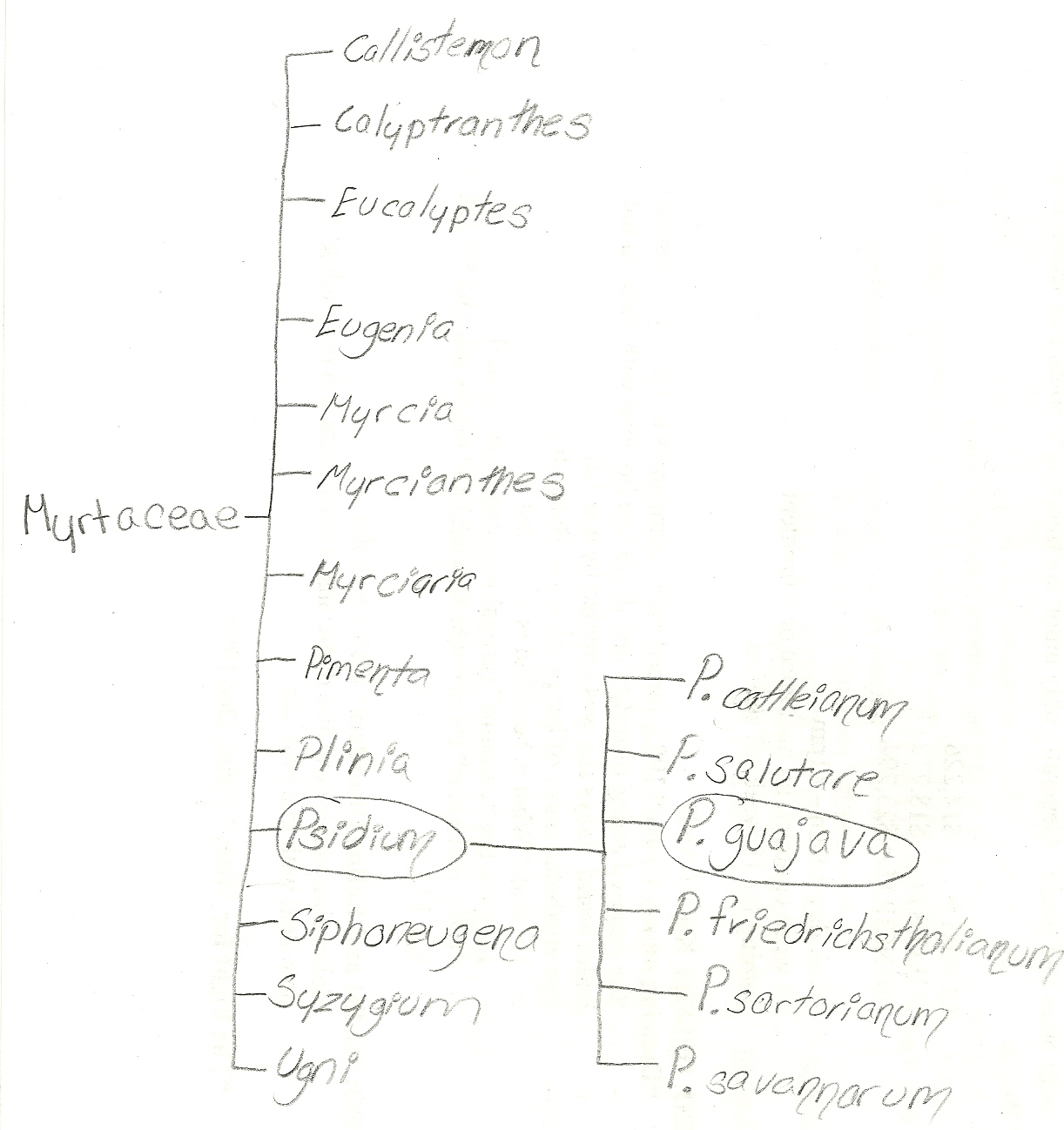Classification
Domain: Eukarya - Eukaryotes have a true nucleus and membrane bound organelles. This is a very diverse group containing everything from black pepper to the green fish (a sea cucmber) to the fever tree (where Quinine, an anti-malaria drug, is from).
Kingdom: Plantae - Plants are classified by their ability to produce their own food (autotrophs). Most plants are multi-cellular and have roots, stems, and seeds/spores.
Phylum: Magnoliophyta- Also known as the angiosperms, magnoliphyta includes a large variety of plants, but all have flowers, produce seeds, and have fruit that encase the seeds.

Class: Magnoliopsida- Also known as dicotyledons (or dicots), these plants have branching veins, secondary growth, and two cotyledons (hence the name dicot). Members of this class also include the opium poppy, sweet orange, castor bean, pongam tree, and the St. John's Wort.
Order: Myrtales - Differentiated from other angiosperms by phloem tissue on each side of the xylem, the Myrtales are most abundant in Australia and the American tropics. The pollen is usually two celled, but in Combretaceae some species have three-celled pollen.
Family: Myrtace ae- All species this family (which also includes
myrtle, clove,
eucalyptus, feijoa, and allspice) are woody and have
essential oils. The stamens are usually brightly colored to
attract pollinators.
ae- All species this family (which also includes
myrtle, clove,
eucalyptus, feijoa, and allspice) are woody and have
essential oils. The stamens are usually brightly colored to
attract pollinators.
Genus: Psidium- From the Latin meaning "pomegranate", which is ironic because the pomegranate isn't part of this genus. Member of this genus, which are all called "guava"
Species: Psidium guajava - Commonly known as the "apple guava", P. guajava is differentiated from other species of guava by its extremely fragrant smell; round, egg-shaped fruit; and leathery, shiny leaves with prominent veins making a distinct pattern.
To learn more about how P. guajava gets its food (because plants need food and oxygen too), click here.